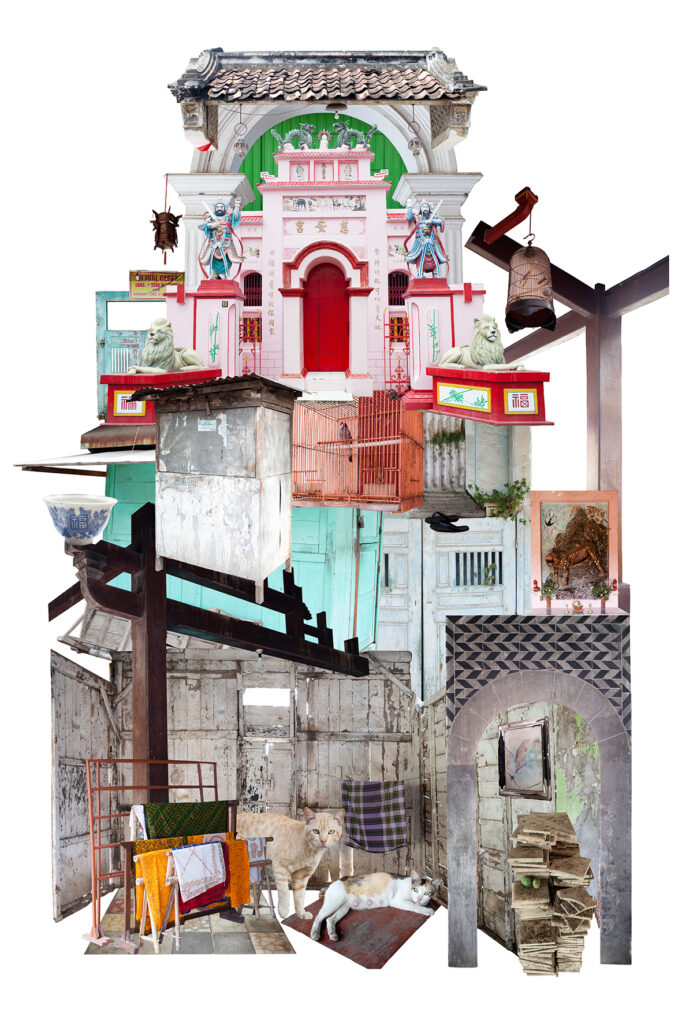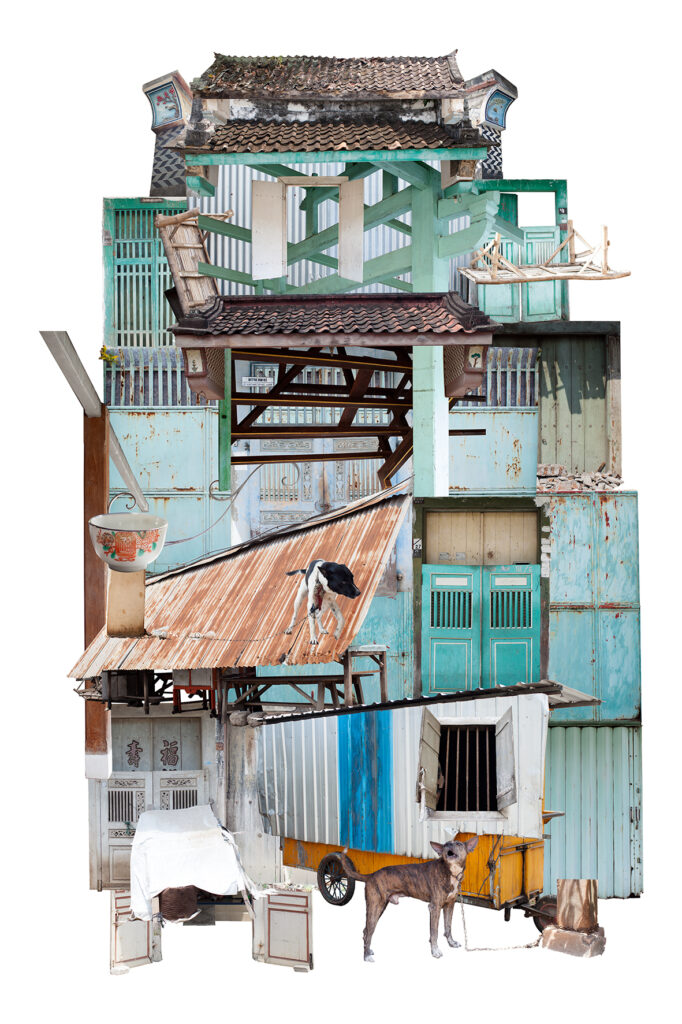In the middle of 2021, I had the opportunity to create new works and exhibit them at Lasem City in Rembang, Central Java. The massive ancient buildings in the style of traditional Chinese architecture have earned Lasem the nickname “Little China”. For hundreds of years, cultural acculturation has produced various types of priceless cultural heritage, such as Batik Tiga Negeri, which reflects a fusion of Chinese, European, and Javanese cultures. During my first visit to Lasem, I attempted to create the big narratives that had already emerged, such as diversity, tolerance, and so on. With just a basic knowledge of Lasem, I convinced myself to use intuition and personal impressions as a starting point for developing concepts and ideas.
A friend of us called Mas Pop, who is also a local resident, as our tour guide in Lasem, took us from the usual places for tours to entering the homes of anti-mainstream residents. Chinese architectural houses, lined up and surrounded by high walls, are expanding rapidly along with carts and street vendors’ tents glued to the walls surrounding Chinatown. We also had the opportunity to visit one of the residents’ housing in the Chinatown area, which is occupied by a grandfather known as Opa and Bu Minuk. A barking dog with a chain around his neck greeted us just next to the house’s entrance. After entering the house and able to speak shortly with Ms. Minuk, I had the feeling that the house with the Chinese architectural style seemed to isolate its occupants, as if they were separated from the outside world. We were a little awkward at first because we didn’t really want interfere on their privacy, but Mas Pop assured us that they would be happy to be visited or cared for. Maybe if Mas Pop and his guests did not make regular visits, the residents of the old houses, mostly the elderly, would be forgotten or no longer connected to the outside world.
Another thing that grabbed my attention was our visit to the Cu An Khiong temple, Lasem’s oldest temple. I found several caged birds perched on the ceiling in the temple’s side area. I was surprised at the time because, as far as I know, some events, such as temple weddings, have a procession to release birds into the wild. As a gesture of goodwill, all beings are granted freedom. I chose animals and architecture as the main themes and materials for my work, instead of trying to figure out what is right and wrong.
Numerous animals are found in Chinese culture as symbols that interpret hope and prayer, one of which can be found in every corner of the front and back of a building. Then I combined elements of traditional Chinese architecture with the semi-permanent structures of street vendors found throughout Chinatown. This work also juxtaposes mythological animals found in the ancient structures with animals found in the Lasem Chinatown area. We can investigate how humans treat pets or animals that live around us, that also indirectly reflects our feelings about the environment. To fulfill the need for protection, we would position our pet as a family member or as a ‘housekeeper,’ as an example of how someone raises a dog.
Digital print on fine art paper on wood frame, 2021


